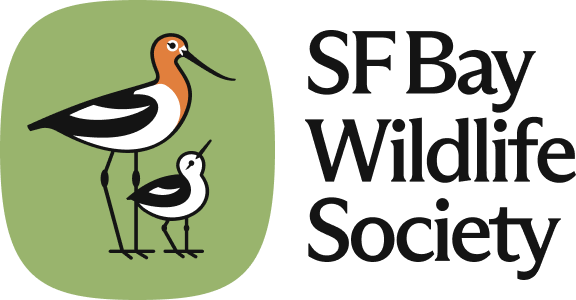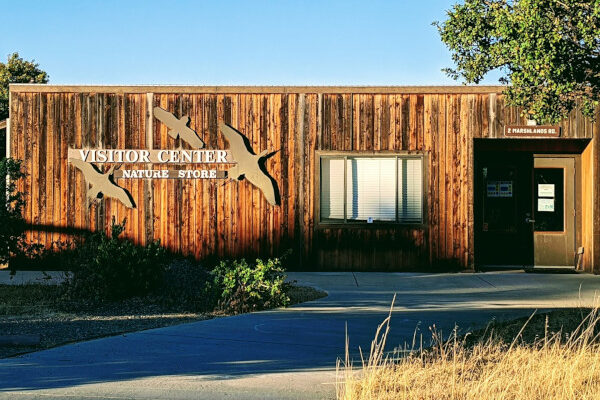by Meg Marriott, Wildlife Biologist, San Pablo Bay NWR and Marin Islands NWR; Josh Nuzzo, Nursery Manager, Point Blue; and Jax Vernacchia, SCA intern
San Pablo Bay National Wildlife Refuge
Formed in 1974, San Pablo Bay Refuge provides 21,000 acres of tidal and seasonal wetlands habitat. These acres located in the North Bay included historically a military base and lands for agricultural and hunting.
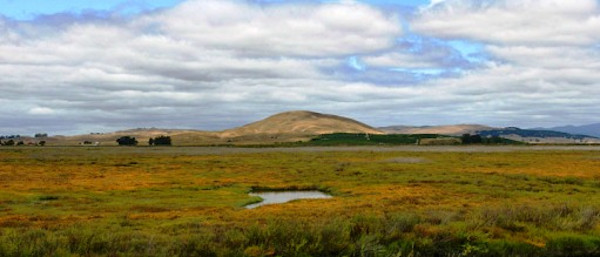
San Pablo Bay National Wildlife Refuge. Credit USFWS.
Best Management Practices for Phytophthora control
Most commonly known throughout the Bay Area for the species Phytophthora ramorum that causes Sudden Oak Death, Phytophthora is a genus of plant damaging oomycetes or water molds that spread in water, soil and host plants. Phytophthoras parasitize the tissue of plants, inoculating them with spores, weakening them and making them more susceptible to drought and disease, potentially causing plant die off. These water molds often spread due to human activity, including the transportation of infected soil and host plants to and from plant nurseries.
Since 2007, San Pablo Bay National Wildlife Refuge (Refuge) has partnered with Students and Teachers Restoring a Watershed (STRAW) to annually propagate, grow and plant thousands of native plants per year on the Refuge. Over the past two years, nursery manager Josh Nuzzo of Point Blue/STRAW has brought the Refuge nursery into compliance with Phytosphere best management practices (BMPs) for Phytophthora control to assure that this pathogen does not spread through nursery grown plants into native restoration sites on the Refuge. Nursery facility BMPs include ensuring proper drainage throughout the nursery, placing plants only on metal tables 3ft or taller and installing mandatory foot cleaning stations for all nursery visitors at all entrance points. Other BMPs for preventing Phytophthora spread through soil and stock include (but are not limited to) baking all soil at 140-150°F for 30 minutes, bleaching or steaming all pots, prohibiting entrance of untested plant material into the nursery, and growing plants from seed.
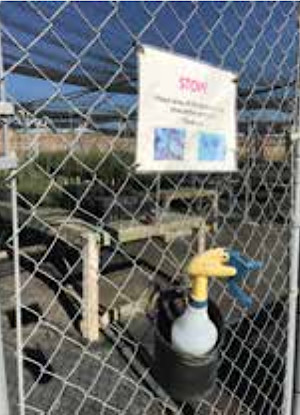
Phytophthora prevention reminder at San Pablo Bay NWR Nursery entrance. Photo credit: Meg Marriott.
As part of the nursery BMPs Josh and Point Blue/STRAW are always seeking ways to improve on existing Phytophthora control practices. In November of 2018 Josh invited members of Phytosphere, CDFA and other native plant nurseries to inspect the Refuge nursery facilities and to suggest improvements for eventual Nursery Accreditation. As a result, Josh now tests plants for Phytophthora using one or more of several methods. All methods take a significant amount of time and a lot of pears! Pears are used as a “bait” for the Phytophthora zoospores and can lure them out of soil. Once the pears have had the time for inoculation, Josh then inspects for lesions that indicate positive Phytophthora presence. All material testing positive for Phytophthora is properly disposed of.
In June of 2019 Josh collaborated with Jax Vernacchia, a SCA intern for the Refuge, who facilitated a tour for Refuge and Point Blue/STRAW staff of the National Ornamentals Research Site at Dominican University of California. Dominican University, Jax’s alma mater, was one of the first research centers in California to begin study of Phytophthora control. We met with Wolfgang Schweigkofler, PhD to discuss Phytophthora BMPs, and to share ideas about control in a Refuge nursery environment. After the visit Jax recorded some ways in which all people can help prevent the spread of Phytophthora, namely; not leaving plants in standing water, asking the nursery you are buying from if the soil has been tested for the pathogen, only using clean soil for planting (most packaged soils are treated and do not have the pathogen), washing mud or dirt from your shoes before hiking, and not planting untested plants in natural spaces such as oak groves or grasslands.
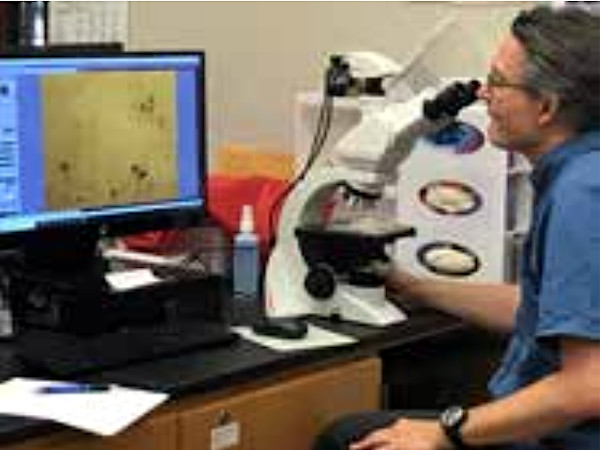
Dr. Schweigkofler inspects Phytophthora spores. Photo credit: Meg Marriott.
In summary, practicing Phytophthora BMPs in and out of nursery settings helps to ensure that we are “doing no harm” when we are moving plants. On the Refuge these practices are especially important to preserve unique and limited habitat that supports threatened and endangered species and trust resources that we serve to protect.


